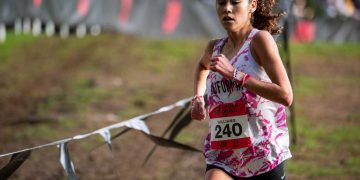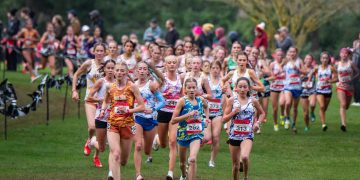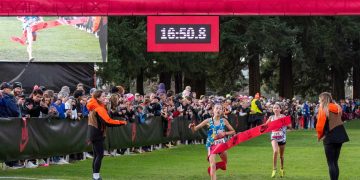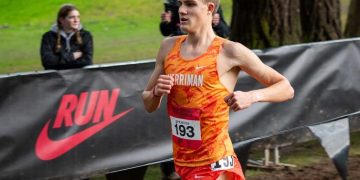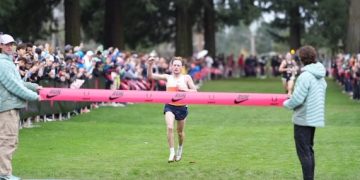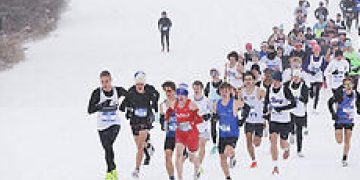RelatedPosts
Running the ‘Extras’: Think outside the miles and improve your performance
Eventually all runners come to realize there is more to training that just running. For reasons from injury prevention to increased flexibility to allow full range of motion in stride, the ‘extras’ are powerful training tools. For young runners, the earlier you can ‘catch them’ and teach them the importance of thinking outside of the miles, the better for their development and longevity in the sport.
The logistics of implementing these ‘extras’ can be difficult for a few reasons. Often times, practice times are limited and coaches or athletes may be hesitant to work on hurdle drills or stretches for fear of ‘wasting’ time. Along the same lines, the gains from these drills only come with consistency and with a long-term outlook.
As Coach Jay Johnson(http://www.coachjayjohnson.com/) observes, ideally runners should be “working with coaches who have a 10-year plan, not a season plan. We are absolutely horrible in this country with our long term planning.” He notes this is hard with transitioning from high-school to college and beyond and not having the same coach, though he explains, “But each of the first two coaches, if they are good, will be able to train the athlete with post-collegiate running as an option.”
With drills, doing them RIGHT is everything; doing them incorrectly could end up doing more harm than good. Coaches may have dozens of kids to look over and realistically it can be tricky to keep track of every single athlete.
So these ‘extras’ can sort of slip through the training cracks and runners may not be motivated to do them until an injury forces them to or they get to college or a higher dedication level with their running.
Reaching young runners, and their coaches, with the message to widen their training scope has been taking off thanks to more camps and websites touting the importance of hurdle and mobility drills, core and strength work, footwork ladders, and dynamic stretching routines. The elites are stressing the importance of them and the young kids are able to watch the results. Johnson himself, and also teaming with Phil and Jim Wharton, has made a big effort in spearheading this movement and getting the information out there. [You can find his DVD series on strength, mobility, and flexibility on his site.( http://www.runningdvds.com/)]
Integration should be done in bits and pieces, just as with adding mileage and intensity for young runners, coaches need to avoid overloading the developing bodies. While most of this work will actually promote and build healthier running biomechanics, making the athletes more resistant to injuries, it’s still important not to do too much all at once.
There is a natural progression for the drills, mobility, and strength work. You really can’t ever do ‘too much’ stretching, so for younger runners the easiest place to start is with a dynamic and static stretching routine. The only rules there are to ensure the muscles are properly warmed-up BEFORE doing any stretches.
After that, moving to hurdle drills, skips, and footwork ladders would be smart. “Hurdle mobility is underutilized by coaches, but it’s key for both mobility and core strength and postural strength,” states Johnson. Getting young runners as supple as possible, moving outside the horizontal plane, and retaining the natural agility youngsters possess is the aim; it is that agility that tends to get dulled with years and years of repetitive miles.
Next is core work, starting with moves like the plank, lunges, squats, and body-weighted exercises. Weighted strength work is something that requires a little more proceeding with caution. And, there are plenty of ways to modify these former moves to make them harder before moving to actual weight-type work.
When a runner does begin true weight work (it’s tough to generalize but maybe about the time of junior year in high school) it’s not in place of the general strength exercises either. Johnson says, “In terms of weight room work, definitely lots of body weight work, then medicine ball and perhaps kettle bell work before the weight room. Weight room is fine, but you need to have good strength levels before you go in there.”
Ultimately it’s building each of these extras into your running routine then timing them correctly. That comes with a whole host of rules in itself, I’ll touch lightly on a few:
Stretching: A dynamic/static routine done after a warm-up period before workouts or after easy runs
Footwork drills and skips: Sprinkle these in as part of your warm-up for workouts or after easy days
Hurdle mobility: 2-3 times a week; after hard workout days would be a good idea following cool-down
Ladder drills: As part of a warm-up for speed days
General strength and weight room work: Alternate days; 2-3 days in the gym (once you get to that point), incorporate GS routines on off days
Runners must understand that the rewards of all of these ‘extras’ will pay off in their ability to stay healthier and become more efficient. More training time and efficiency translates to more PR’s.
———————–
Caitlin Chock (caitchock.com) set the then National High School 5k Record (15:52.88) in 2004. Now a freelance writer and artist she writes about all things running and designs her own line of running shirts. You can read more, see her running comics, and her shirts at her website.
Author
-

Larry Eder has had a 52-year involvement in the sport of athletics. Larry has experienced the sport as an athlete, coach, magazine publisher, and now, journalist and blogger. His first article, on Don Bowden, America's first sub-4 minute miler, was published in RW in 1983. Larry has published several magazines on athletics, from American Athletics to the U.S. version of Spikes magazine. He currently manages the content and marketing development of the RunningNetwork, The Shoe Addicts, and RunBlogRun. Of RunBlogRun, his daily pilgrimage with the sport, Larry says: "I have to admit, I love traveling to far away meets, writing about the sport I love, and the athletes I respect, for my readers at runblogrun.com, the most of anything I have ever done, except, maybe running itself." Also does some updates for BBC Sports at key events, which he truly enjoys.
Theme song: Greg Allman, " I'm no Angel."
View all posts



